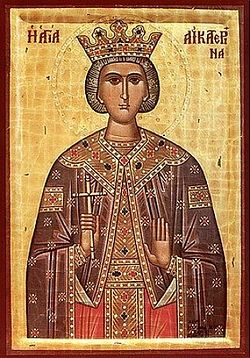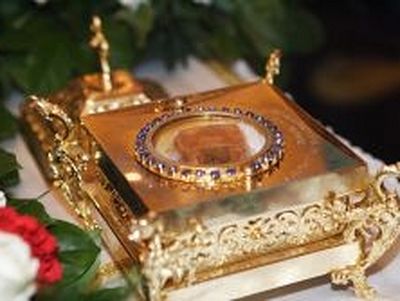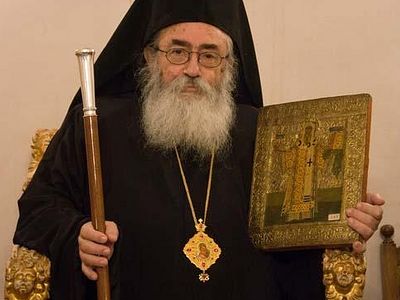SOURCE: Catholic Herald

An exceptional student in the arts and sciences, she announced that she would only marry someone “who surpassed her in beauty, intelligence, wealth, and dignity”, which was taken as a reference to Christ. In any case, no decent enough men were available on earth and she remained a virgin.
She is said to have brought hundreds to the faith, and even tried to convince the Emperor Maxentius to stop persecuting Christians and worshiping false idols. The emperor arranged for the best pagan philosophers to debate her. She even convinced some of them to embrace Christianity. As a result, they were put to death.
Catherine apparently converted Maxentius’s wife, who of course was then killed. She had been among 200 people who came to visit Catherine when she was imprisoned. Refusing to recant after various tortures, she was condemned to be broken on the wheel and then beheaded.
Catherine is venerated by both the Orthodox and Catholics. She is one of the Fourteen Holy Helpers who Catholics turn to for intercession. But she is, historically, an unlikely figure, and her feast day was removed from the General Roman Calendar in 1969, only for it to be restored in 2002 as an optional memorial. Unlike most saints of the period, Catherine cannot be identified with any historical figure and her earliest biographies come 500 years later. One possibility is that she is based on a woman written about by the chronicler Eusebius in 320: a young Christian put to death because she had refused to become his mistress.
Her tradition was certainly established by the sixth century, when Emperor Justinian established St Catherine’s Monastery in Mount Sinai. Today the monastery is a rich source of Christian art and architecture, including the most precious Coptic icons.
St Catherine’s cult become a major part of Christianity in the medieval period, and among the many western European shrines to Catherine were those at Canterbury and Westminster. The patron saint of learning, she was the inspiration for St Catharine’s College, Cambridge, founded on her feast day in 1473 to further the study of theology and philosophy.



